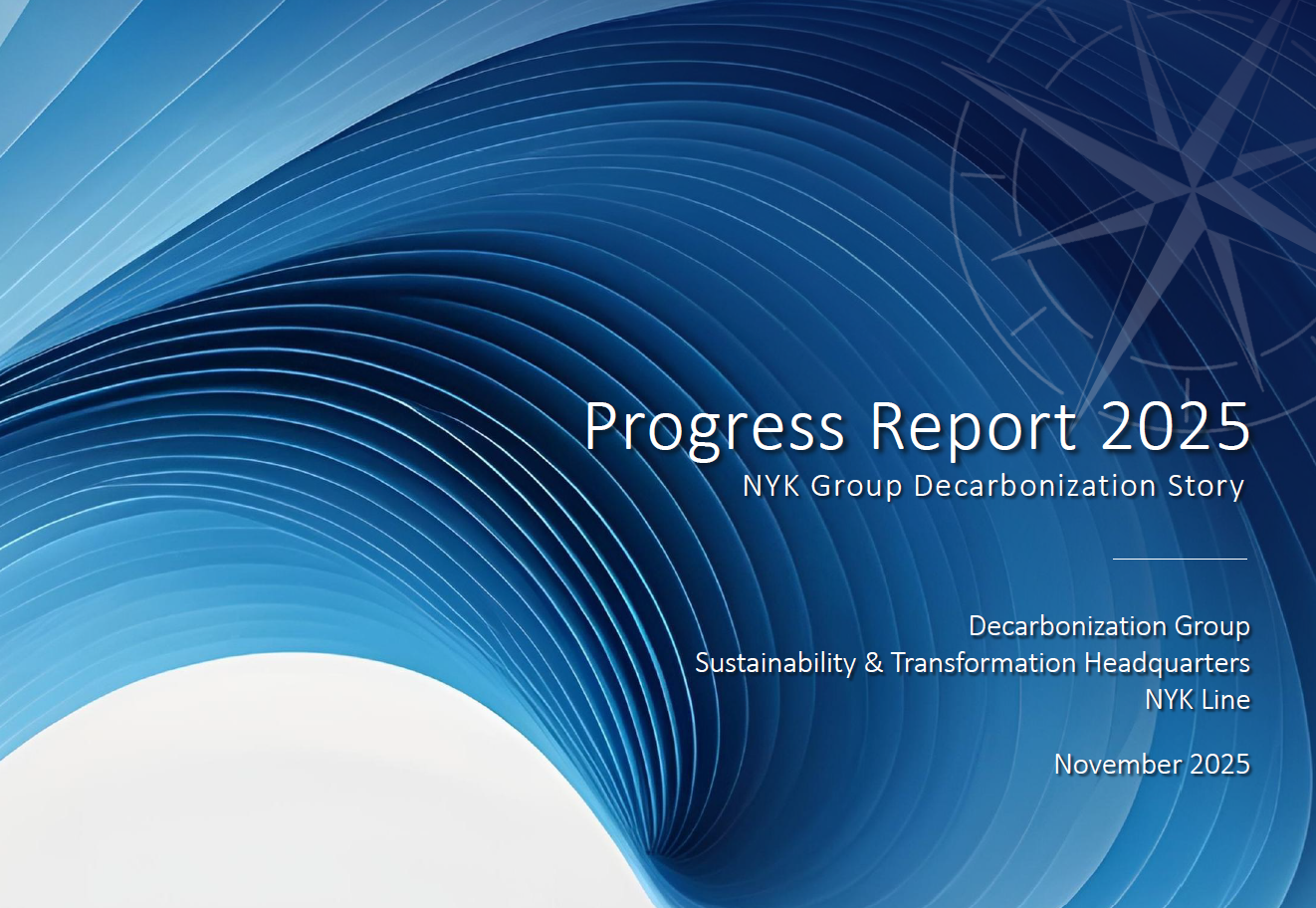Nov. 25, 2025
NYK Issues “Progress Report 2025 – NYK Group Decarbonization Story”
A Comprehensive Update on NYK’s Initiatives Toward Net-Zero GHG Emissions by 2050
On November 25, NYK released “Progress Report 2025 — NYK Group Decarbonization Story” (“Progress Report 2025”), detailing the advances made in the NYK Decarbonization Story (“NDS”) first announced in November 2023. Building on last year’s “Progress Report 2024,” this new report highlights our latest achievements and the progress of our initiatives, while also providing deeper insights into the challenges we face in achieving our targets.
In recent years, the decarbonization landscape in the maritime industry has shifted significantly, accompanied by new regulatory discussions at the International Maritime Organization (“IMO”). This report summarizes how the NYK Group is advancing its decarbonization strategy and addressing the challenges toward achieving our goals.
Click image to access Progress Report 2025.
For more details on the NYK Group Decarbonization Story (NDS), please visit:
NYK Group Decarbonization Story | NYK Line
Logistics is the foundation of many industries, and its decarbonization is essential for achieving carbon neutrality across society. However, shipping is considered a hard-to-abate sector, with significant technical and institutional challenges in reducing greenhouse gas (GHG) emissions. In November 2023, the NYK Group announced the NDS, setting ambitious targets: a 45% reduction in Scope 1 and 2 emissions by 2030 (compared to FY2021), and net-zero emissions for Scope 1, 2, and 3 by 2050. We are steadily moving forward with initiatives designed to achieve these goals.
Key Highlights of Progress Report 2025
・Accelerated improvement in the accuracy and scope of Scope 3 emissions* accounting
・Enhanced technical verification for the use of biofuels
・Initiation of pilot procurement of carbon dioxide removal (CDR) credits**
・Ongoing advocacy activity*** for the establishment of fair and impartial international rules
・Demonstrating leadership in developing international standards for GHG emission intensity of transportation****
Structure of Progress Report 2025
Introduction
・Growing importance of Scope 3 emissions amid increasing regulations and disclosure requirements, positioning low-carbon choices as a business advantage
・Alignment of NYK‘s alternative fuel strategy with IMO regulations under discussion
Chapter 1: Decarbonization — Efforts to Achieve Net-Zero Emissions
・GHG reduction progress as of FY2024
・Expanded deployment of energy-saving devices and introduction of crew-centric operational initiatives
・Increased use of biofuels and further technology validation
・Progress in introducing dual-fuel vessels
・NYK’s initiatives addressing our Scope 3 emissions
・Pilot procurement of CDR credits and activities toward regulatory implementation
Chapter 2: Competitiveness — Building a Fair, Sustainable Environment and Enhancing Our Competitive Edge
・The critical role of product carbon footprint in driving decarbonization across the entire value chain
・Standardization of GHG emissions calculations and the development of comprehensive guidelines
・Advocacy for fair regulations and disclosure standards
* Scope 3 emissions
Indirect GHG emissions across the entire value chain, including procurement of raw materials, transportation, product use, and disposal.
** Carbon dioxide removal (CDR) credits
An environmental value that can be traded, representing the amount of CO2 removed from the atmosphere through CDR technologies or approaches. Unlike emission reduction, CDR aims to physically remove CO2 from the atmosphere.
*** Advocacy activity
Proactive engagement with governments, regulators, and industry bodies to influence fair and effective international rules and standards through policy proposals and awareness efforts. NYK has staff stationed in Europe for these activities.
**** GHG Emission Intensity of Transportation
An indicator showing GHG emissions per unit of transport activity (e.g., ton-kilometers). By multiplying transport distance, cargo weight, and emission intensity, companies can visualize Scope 3 emissions for their value chain, and shippers can compare emissions by transport mode or logistics pattern. By choosing additional low-carbon transport options, shippers can reduce Scope 3 emissions, balancing cost and environmental value.
The news on this website is as of the date announced and may change without notice.
